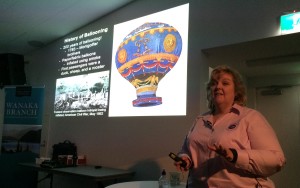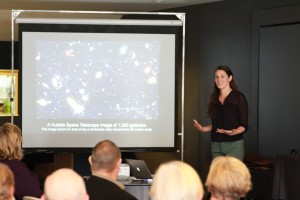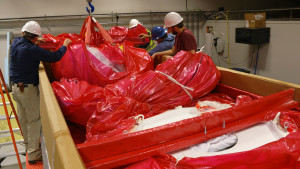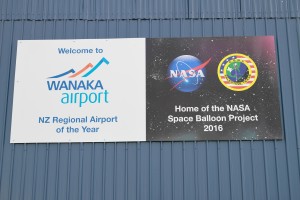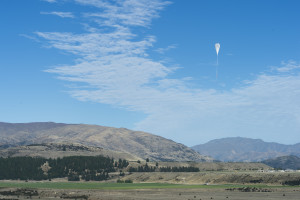NASA’s scientific balloon technicians marked another flight checklist item complete today after joining the base fitting of the Super Pressure Balloon (SPB) to the payload parachute. After making the connection, technicians worked to verify power and signal cables were aligned and properly connected. The team continues to work toward an April 1 launch date from Wanaka, New Zealand.
The work today highlights a particularly beneficial aspect of NASA’s balloon flights: the ability to recover the payload after flight objectives have been met. Once mission objectives have been met, but while the balloon is still at float, operators work with NASA safety officials to assess a safe area to terminate the balloon flight. As part of the assessment, officials factor in the real-time position of the balloon, forecast wind speed and direction, and whether or not the balloon is near a population center. After determining the balloon is in a position where public safety will be protected, operators send flight termination commands to bring the payload back to Earth via parachute.
Once on the ground, a recover team will go to the landing site to recover both the payload and the balloon.
The work completed today in joining the balloon to the parachute and verifying all supporting systems are operating normally is a vital step toward ensuring the ability to recover the balloon payload.
(Note: In the video, the Compton Spectrometer and Imager (COSI) payload and gondola is seen on the far left. COSI is flying as a mission of opportunity on this year’s SPB test flight. For more information on COSI, please see: http://cosi.ssl.berkeley.edu.)


